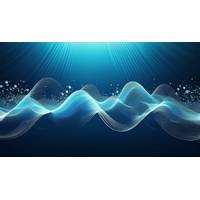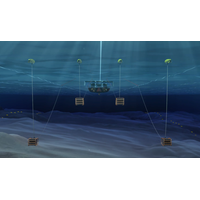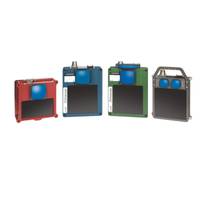
Underwater Radiated Noise and Ocean Health
output of ship engines, indirectly contributing to URN reduction. More advanced technologies, such as wind-assisted propulsion and techniques to ensure Just-in Time Arrival, hold promise for further mitigating both emissions and noise pollution.Understanding URNUnderwater radiated noise refers to the sound energy emitted from ships into the ocean. This noise originates from various sources, with cavitation from propellers being the most significant contributor. Cavitation occurs when water vapor bubbles form and collapse near the propeller blades due to pressure changes, releasing energy in the form of

The Problem with Reducing Underwater Radiated Noise
.”Shipping sustainability expert Dr Seyedvahid Vakili of the University of Southampton highlights the significant potential to reduce URN from commercial vessels by complying with IMO GHG emissions regulations. He estimates that a 10% reduction in speed could result in a 40% reduction in sound energy generated by global shipping because cavitation noise levels is speed-dependent. He notes, though, that this projection only relates to vessels with fixed pitch propellers (FPP).Reducing speed with controllable pitch propellers (CPP) can tend to increase propeller noise, but as one OEM explains

Shearwater, Equinor, Lundin, Vår Energi Working on Marine Vibroseis Tech for Seismic Surveys
between Shearwater, Equinor and the Norwegian Research Council, with Vår Energi and Lundin Energy Norway now joining and ensuring funding and commitment for the multi-year development, Shearwater said."The joint ambition is to acquire better quality seismic data, faster and with low sound energy by harvesting the untapped potential of marine vibratory sources,” said Massimo Virgilio, CTO of Shearwater GeoServices. “We are investing in this technology as a solution for the energy transition enabling monitoring of carbon storage and efficient exploration and

A Seismic Shift Towards Quieter Surveys
helping companies to find the hydrocarbons they can then produce.Seismic data helps geophysicists and geologists understand the rock formations in the earth, what might be happening in them and, crucially, if they might contain oil and gas. Similar to acquiring seismic data onshore, it means emitting sound energy (a source) then detecting its return and interpreting that information to image the subsurface.While the industry moved away from use of dynamite as a source in the 1960s, the sound energy created, now mostly by air guns, can still impact marine life. As such, it’s use is highly regulated

Meet the Future of Visualization and Mapping Sonars
years of experience in the subsea market coupled with feedback from our customers, and directed by our R&D department, we never stand still. All of our real-time 3D sonars use a proprietary technology and remain the only true real-time 3D imaging sonar, transmitting a large volumetric pulse of sound energy which generates typically over 16,000 beams for every acoustic transmission or ‘ping’. We have made significant steps forward in innovating our fourth generation (4G) of these products and the company is launching the new Echoscope4G Surface sonar in January 2018.
Sound Energy Starts Drilling at Tendrara
Sound Energy, the European / Mediterranean focused upstream oil and gas company confirmed the commencement of drilling of the first well at Tendrara, onshore Morocco. With the rig-up completed on 15 April, the well was spud on 20 April 2016. Drilling is expected to reach a total measured depth of 2640 metres with the drilling programme anticipated to include coring, logging, completion and testing. The Company looks forward to updating shareholders on the
Sound Energy Reports Progress On Moroccan, Italian Licences
Sound Energy, the European/Mediterranean focused upstream gas company, is pleased to provide the following update on its Moroccan and Italian gas portfolio. Tendrara, Morocco Further to the recently announced signatures with Schlumberger of both the strategic partnership across Europe and Africa and the Field Management Agreement specifically on Tendrara, the Company has now signed a Letter of Intent with Entrepose Drilling Morocco for the supply of a HH300 rig for the first two wells on the licence (which are expected to be back to back). The Company, post the recently announced
Acoustic Zoom: The Future of Offshore Exploration
necessary. Acoustic Zoom Developed by Prof. Jacques Guigné and Prof. Nicolas Pace at the University of Bath, Acoustic Zoom is a novel seismic exploration technique adapted from sonar applications. The principle differs from that of conventional seismic survey which analyzes the reflecting sound energy returned from the seafloor. Instead, Acoustic Zoom uses a 16-spoke array set on the ocean floor to measure how the energy is scattered. The array transmissions transfer energy as small calculated bursts released slowly over time. As the system is stationary, energy is directed in a localized

U.S. Navy: Marine Mammal Project Breaks New Ground
23 marine mammals. The data from the satellite tags enabled them to track points along the animals' path and, in some cases, due to more sophisticated tags, their dive movements. The range facility's hydrophones, on the ocean floor northwest of Kauai, were used to record data on the actual levels of sound energy from sonar transmissions. That data enabled the scientists to use mathematical modeling to produce estimates of the range of sound levels to which some of the animals were exposed and to assess their responses. Some tags didn't provide enough information, as often happens, and many of the

 February 2025
February 2025




